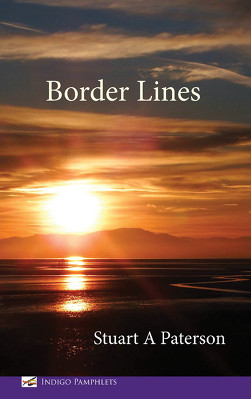The Rag and Boneyard by Bethany W. Pope
– Reviewed by Elizabeth Rimmer –
The Rag and Boneyard is described as a ‘take on the myth of Persephone, re-visioned as a familial tragedy set in the bootleg Southern States of America’. Good, I thought. Mythology and film noir – what’s not to like? When I came to read it, it was more graphic novel than film noir, but that is not a bad thing in any way.
Long narrative poetry is a challenging genre, and Bethany Pope has taken it on with some panache. The book is divided into sixteen pacy cantos, with a powerful and evocative introduction called The Orphic Journey, and the eponymous conclusion, with its echo of Yeats, titled The Rag and Boneyard. The end-pieces are the strongest in the book, atmospheric and evocative. Orpheus has become a journalist, entering into the underworld through swamps, heat, snakes and mosquitoes, and reminders of centuries of criminal oppression:
You steer your white horse along,
between the fleshy branches
of mangrove, hair ruffled by fingers
of scabrous oak trailing moss hairs
that drip mites on your collar,
hungry and red, the crawling
seeds of pomegranate,
the fruit of the dead.
The narrative moves away from mythological themes of life and death and the cycle of the seasons, though Demeter retains her responsibility for bread. I like that, in this version, her fury does not result in adverse weather and famine, but a nasty dose of food poisoning. Pope concentrates instead on a psychological interpretation of an abusive family structure: Persephone is not abducted, but traded in a bid for power and wealth, and Demeter is less concerned to get her daughter back than to have her vengeance. There is no jeopardy in the eating of the pomegranate seeds, and Persephone takes on the mantle of Queen of the Underworld with disconcerting alacrity. The descent and return of the Orphic initiation rituals is into the house of horror of the human heart: ‘Riches. Sex. Madness. Death. —The usual stuff’, as Plouton says, and a horrific place it certainly is – poppies in skulls, books bound in human skin, walls papered in flesh and savage dogs at every gate.
The style of the poem reminds me more of Gotham than film noir, heavy on the art deco visuals (the Lalique vase, the outline of a tree against the sunset, Demeter’s halo of blonde hair against the window, the blood-red poppies in Persephone’s ‘crow-black’ hair), the grungy colour scheme, the beauty of the imagery pointing up the horror of the content:
The walls were swathed
in curtains; taffeta and silk,
done in the colours of midnight
and blood. An insane cocoon,
preparing to give birth.
There’s a lot going on in this story, a study of adolescent sexual fantasy, (Death and the Maiden, the Electra complex), the standard feminist link between the capitalist exploitation of the earth and sexist exploitation of female sexuality, and a credible horror fiction style origin-story of the birth of a monster. The connection between dysfunctional American power-broking and oil is a matter of colour and texture rather than overt action, and the contrast with Demeter’s earth-born riches – wheat, bread, children, isn’t unduly hammered.
It is not surprising in such a long work that, at times, Pope’s grip on such a long poem seems to slacken, and the language sometimes falls flat. Sometimes it’s a little heavy-handed, a little too ready to point the reader to the metaphor. There’s an image of Persephone’s book (Ovid’s Metamorphoses, what else)
on her lap like an arrow-downed
bird, an ill-luck albatross
that seems more than a little laboured, and I struggle to see the point of the consciously steam-punk goggles that Jove wears. There are several failures of editing – I’m fairly sure that wild boars have ‘tushes’ or tusks, not thrushes, and at one point Demeter ‘lathes’ her hands where ‘laves’ must be the right word. But there are some gems: ‘lace-bound’ Demeter is a firework of an image, the symbol of the pomegranate evolves powerfully through the poem, and the equation of maths with magic is particularly neat. Every age rewrites the ancient myths in its own way, and I think that this retelling is one for our age, combining as it does the virtues of very visual and visceral methods of story-telling for the video-game and comic-writing generation.





